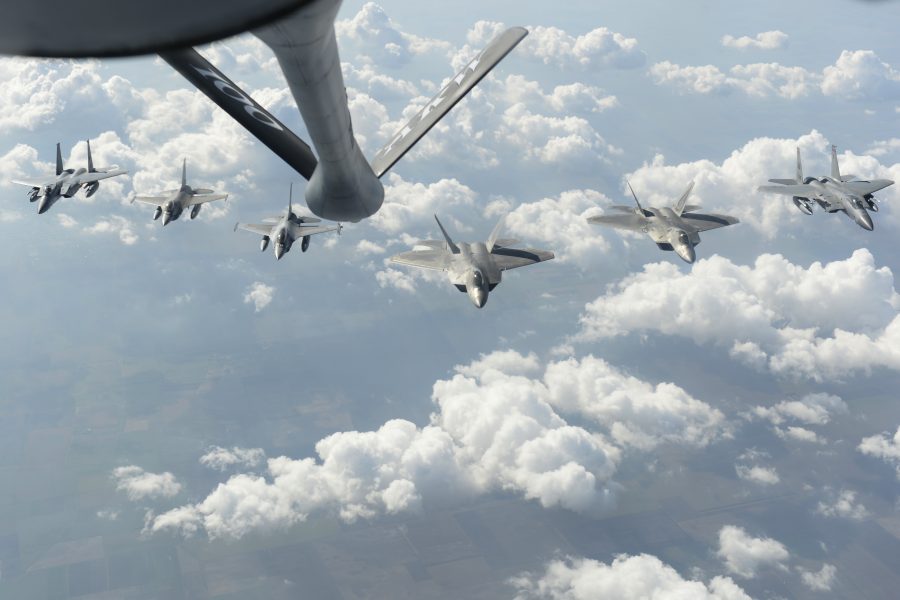Many government organizations have pursued “agility” with mixed success, confusing whether it’s “nimbleness” or “a culture element.” According to McKinsey & Company, agility is objective, and attained by balancing stability and dynamism. Striking that balance can help unlock major opportunities for the Department of the Air Force.
“If you have only stability, then you might be a low functioning bureaucracy. If you have only dynamism, then you invite chaos,” says Kirk Rieckhoff, a senior partner and leader of McKinsey’s Defense practice. “Organizational agility refers to the ability to achieve the optimal balance between stability and flexibility. This involves having certain aspects of the operating model, such as personnel, processes, and budgets, remain stable. It also entails embracing dynamism and adaptability when it comes to task assignment, resource allocation, and responses to a changing environment. This equilibrium empowers leaders to adapt and remain nimble over time.”
McKinsey & Co. has been around for nearly a century and serves between 80 and 90 of the Fortune 100 companies at any given time. While best known for its work in the private sector, McKinsey has supported public sector organizations since WWII. Its work ranges from developing the first Presidential transition team to reorganizing federal science offices into NASA. McKinsey has served every executive cabinet agency in the U.S. and two thirds of U.S. States.
“[The Air Force] is such a large and distributed organization that getting things done quickly and at scale is a significant lift,” says Rachel Riley, a partner in McKinsey’s Public Sector and People/Organizational Performance practice. But she emphasizes there’s nothing about public sector organizations that make them intrinsically slow—in fact, she cites the U.S. Department of Homeland Security’s rapid response to 9/11, FEMA’s reaction to Hurricane Katrina, and the Air Force’s rapid response to the COVID-19 pandemic as prime case studies of public sector agencies that have executed missions with tremendous agility during times of crisis. Achieving at-scale agility within the Air Force is no different.
“The Air Force was born out of innovation,” Rieckhoff says. “There’s a ton of opportunity for government to bring some of those great lessons from the way it works in an agile manner in times of crisis. It just requires a holistic, aspirational approach to do that in the day-to-day business of running the organization.”
According to Rieckhoff and Riley, McKinsey has helped private and public sector companies implement agility into their organizations to improve performance, productivity, organizational health, speed, and work design. Even large, highly regulated, technically complex companies have infused these agile concepts into the fabric of their organization and found success in improving speed, employee satisfaction, and performance.
The Air Force has a structure and set of processes that are well suited and optimized for a relatively slowly changing environment. The current competitive pressures on the Air Force, however, require a faster ability to adapt as highlighted by the CSAF’s Action Orders. To make agility happen today, it requires almost single-minded focus of the most senior leadership.
“The SECAF’s clear priority and laser focus on the operational imperatives are the best example of the level of effort required to make change happen in the Air Force today,” says Riley, though she adds that that’s an incredibly high bar to allow major change to happen. “Many of the Air Force’s pilots, pathfinders, and lighthouses get stuck in purgatory. Our research has found the way out is to reverse the approach. Rather than focusing on a great idea and scaling it across the Air Force, focus instead on a specific unit and apply all the ideas at once. Depots are a great example, or a flight line.”
She also emphasizes the importance of personnel and upgrading existing talent within an organization to meet mission. She cites LEGO as a success story in this area. As covered in McKinsey’s new book Rewired, LEGO provides at-scale opportunities within its workforce to upskill their employee’s digital talents to empower a company-wide digital transformation.
McKinsey has found that mission-driven organizations have a special competitive advantage that plays a key role in finding that balance between structure and dynamism: the mission itself.
“The most critical enabler for agility is a clear, inspiring mission that every member of the team identifies with and is working towards. Unfortunately, that inspiration can often get buried under the weight of unnecessarily complex processes and structures,” Rieckhoff says. “But that’s also what gives me the most hope for the future of the Air Force … [as] an agile innovation engine for the next century of American security.”

